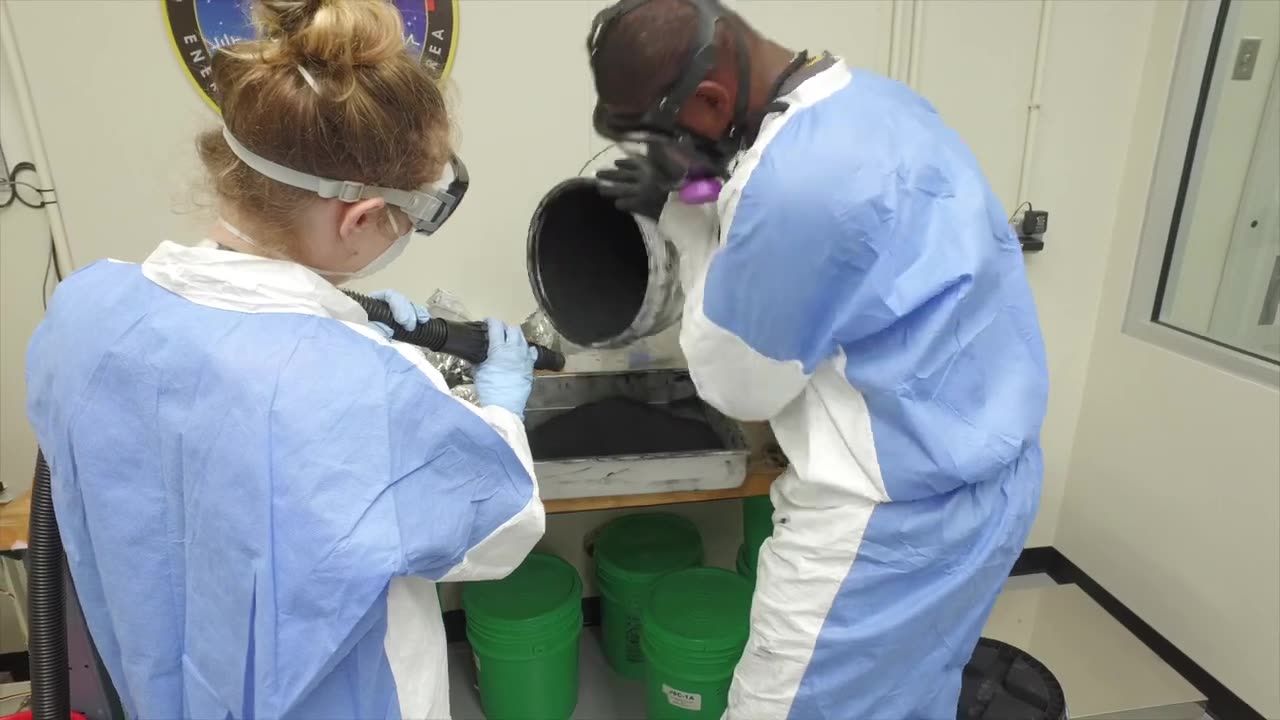Premium Only Content

NASA Achieves Successful Extraction of Oxygen from Simulated Lunar Soil
During a recent test, scientists at NASA’s Johnson Space Center in Houston successfully extracted oxygen from simulated lunar soil. Lunar soil refers to the fine-grained material covering the Moon’s surface. This was the first time that this extraction has been done in a vacuum environment, paving the way for astronauts to one day extract and use resources in a lunar environment, called in-situ resource utilization.
NASA’s Carbothermal Reduction Demonstration (CaRD) team conducted the test in conditions similar to those found on the Moon by using a special spherical chamber with a 15-foot diameter called the Dirty Thermal Vacuum Chamber. The chamber is considered “dirty” because unclean samples can be tested inside.
The team used a high-powered laser to simulate heat from a solar energy concentrator and melted the lunar soil simulant within a carbothermal reactor developed for NASA by Sierra Space Corp., of Broomfield, Colorado. A carbothermal reactor is where the process of heating and extracting the oxygen takes place. Carbothermal reduction has been used for decades
NASA's Johnson Space Center successfully extracted oxygen from simulated lunar soil in a vacuum environment, a crucial step for future in-situ resource utilization on the Moon. Using their Carbothermal Reduction Demonstration (CaRD) setup, scientists utilized a high-powered laser within the Dirty Thermal Vacuum Chamber to melt lunar soil simulant in a carbothermal reactor developed by Sierra Space Corp. The process mimics carbothermal reduction, a technique used on Earth for various applications. After heating, the team detected carbon monoxide using the Mass Spectrometer Observing Lunar Operations (MSolo). Similar devices will be used in upcoming lunar exploration missions, including the Polar Resources Ice Mining Experiment and NASA's Volatiles Investigating Polar Exploration Rover (VIPER).
-
 LIVE
LIVE
TheAlecLaceShow
2 hours agoGuests: Alex Marlow & Terry Schilling | Justice For Laken Riley | Russian ICBM | The Alec Lace Show
149 watching -
 LIVE
LIVE
Danny Haiphong
2 hours agoMARK SLEBODA & SCOTT RITTER: NATO ATTACKS RUSSIA, PUTIN FIRES ICBM WARNING SHOT AT UKRAINE—WW3 NEXT?
1,256 watching -
 40:47
40:47
Dave Portnoy
5 hours agoThe Unnamed Show With Dave Portnoy, Kirk Minihane, Ryan Whitney - Episode 37
20.5K1 -
 51:53
51:53
The Rubin Report
2 hours agoCrowd Shocked by Ben Affleck’s Unexpected Take on This Massive Change
53K35 -
 2:07:25
2:07:25
Steven Crowder
5 hours agoBREAKING: Russia Launches ICBM for First Time in History - What Happens Next?
378K185 -

The Shannon Joy Show
5 hours ago🔥🔥While Americans Are Watching WWE Politics: Australia Is Ramping Up MANDATORY Digital ID🔥🔥
20.6K5 -
 2:03:36
2:03:36
LFA TV
15 hours agoTHE FIGHT IN ONLY BEGINNING! | LIVE FROM AMERICA 11.21.24 11am EST
46.7K21 -
 1:18:10
1:18:10
Graham Allen
6 hours agoPutin Vows Peace With Trump But WAR Under Biden!! + 400,000 Kids Are MISSING?!
116K217 -
 2:11:07
2:11:07
Matt Kohrs
13 hours agoMSTR Squeezes Higher, Bitcoin To $100k & Nvidia Post Earnings || The MK Show
56.9K1 -
 42:07
42:07
BonginoReport
7 hours agoNikki Haley's Hatred of Tulsi Gabbard Just Made Me a Bigger Fan (Ep.90) - 11/21/24
114K228